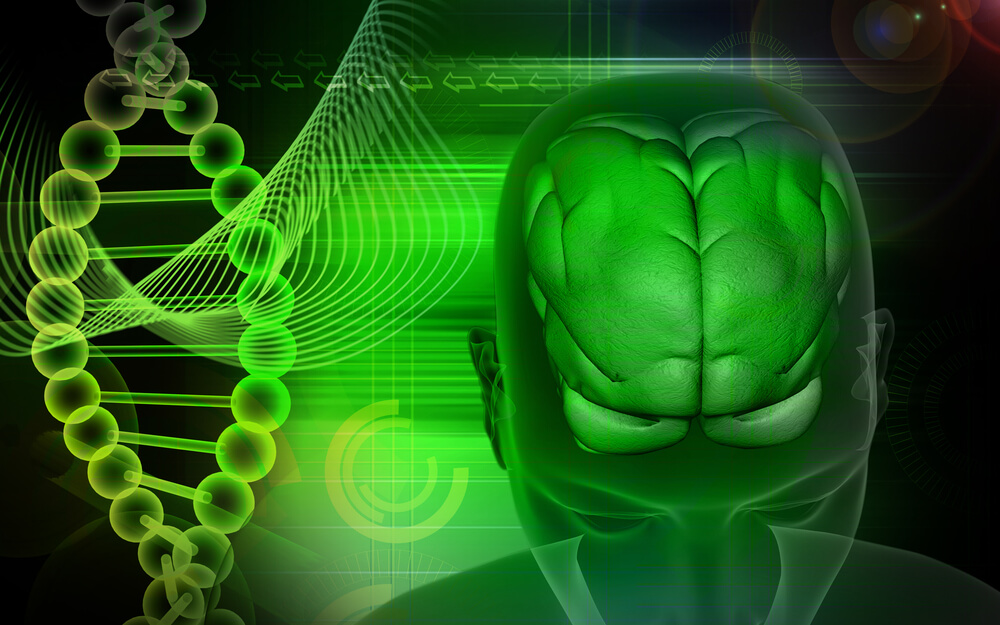There is a wide variety of diseases, from developmental diseases such as autism to degenerative diseases such as Alzheimer's related to damage to the processes of processing sensory information," said Prof. Kobi Rosenblum, head of the Purple Department of Neurobiology at the University of Haifa and one of the authors of the study.

What is the functional relationship between the two halves of our brain? A new study conducted at the University of Haifa found for the first time that different expression of genes in the two halves of the brain is important in forming memories. "There is a wide variety of diseases, from developmental diseases such as autism to degenerative diseases such as Alzheimer's related to damage to the processes of sensory information processing. Following the findings of the study, we know better that we should pay attention to an asymmetric level of activity between the two halves of the brain in the processing of simple sensory information such as the ability to learn and remember new tastes," said Prof. Kobi Rosenblum, head of the Purple Department of Neurobiology at the University of Haifa and one of the authors of the study.
One of the open questions in understanding the function of the brain as a unit that receives, processes and extracts information is the puzzle of the symmetrical or asymmetrical activation of the two halves of the human cerebral cortex. In a small number of brain functions that are defined as "higher functions" such as language, there is activation in an asymmetric format, ie: when our brain performs actions related to language (not only motor actions but actions of understanding and using language), one side of it is more active than the other. When this capacity for asymmetric action is impaired, so is the ability to perform language-related operations.
Since creating and consolidating a sensory memory is not considered a "high functioning" activity, it was assumed that creating a memory requires symmetrical ability. However, recent fMRI studies have shown that even in the case of taste information processing, there is an asymmetric activation of the two brain areas that process these signals. The current study, conducted in Prof. Rosenblum's laboratory in collaboration with research student Sharon Inberg as part of his doctoral thesis together with Dr. Alina Alkobi and Dr. Efrat Adri, examined this phenomenon for the first time at the molecular level.
To this end, the researchers chose to examine the expression of a protein called ARC, a molecule that is only expressed in nerve cells, plays a crucial role in the process of forming memories and synaptic plasticity, and its quantitative expression is closely related to the activity of nerve cells. The researchers exposed laboratory mice to a new taste, and thus created a new taste memory in them: the hypothesis was that when learning a new memory, they would find an increase in the amount of the ARC protein in the brain area that processes taste information.
To their surprise, the hypothesis was disproved as the researchers did not get a correlative increase between the amount of protein and activity in the cerebral cortex. However, when they looked at the protein activity on each side of the brain, they saw the following picture: a clear asymmetry between the two halves of the brain in the expression of the protein when the tested taste was new and symmetry in the expression of the protein between the two halves of the brain when the taste was familiar. Furthermore, the dominant side was random - sometimes the left and other times the right, so the researchers could not predict which side was higher and which side was lower. The researchers also found that the more the rats get to know the taste, the asymmetric activity decreases (the gap between the protein expression on one side and the other decreases) and when the rats get to know the taste completely, then the brain works in a completely symmetrical way. To examine whether the asymmetric activity is indeed important in the process of memory formation, they damaged the expression of the genes on the dominant side - and found that this damage is equivalent to damage on both sides - and the meaning - and erasing the memory.
As mentioned, this is the first time that asymmetric activity has been studied at all in the context of normal processes of memory formation at a molecular level. According to the researchers, since science has tools to cause asymmetric activity of the brain (for example, activation through an electric field resulting from a magnetic field in TMS), this discovery has practical implications for a variety of disorders related to memory formation. They also added that it is likely that all operations related to the processing of sensory information, of which memory formation is a part, require asymmetric operation of the brain. "We know that diseases such as autism, schizophrenia and Alzheimer's are related to dysfunctional processing of sensory information. We also know that these diseases are associated with dysfunction of the asymmetric activity. Now that we have found for the first time that there is also a connection between sensory processing and asymmetric activity, we are opening up new directions for research that can lead to a better understanding of the functioning of the healthy and diseased brain", concluded the researchers.
The article was published in The Journal of Neuroscience
On the same topic on the science website:
